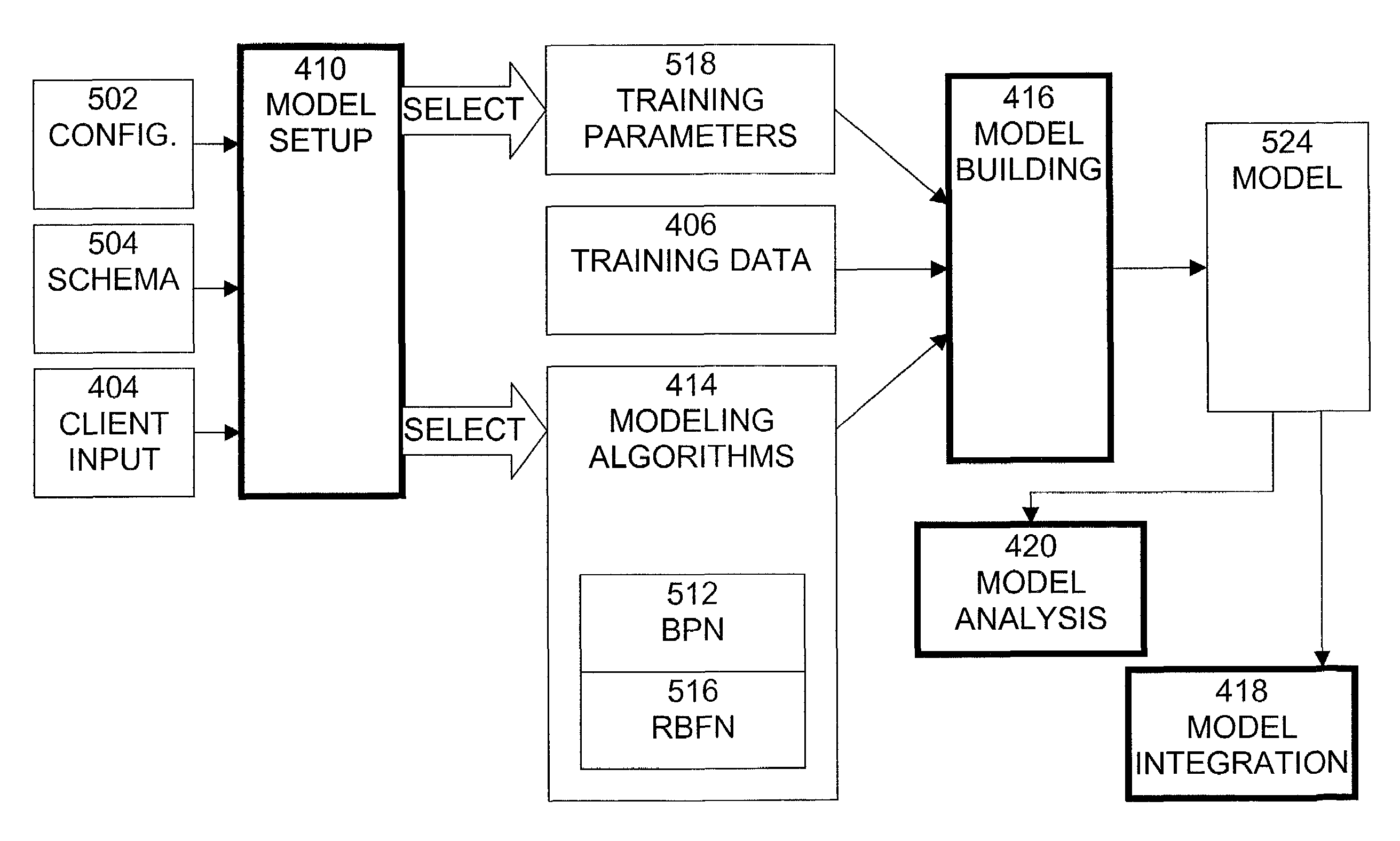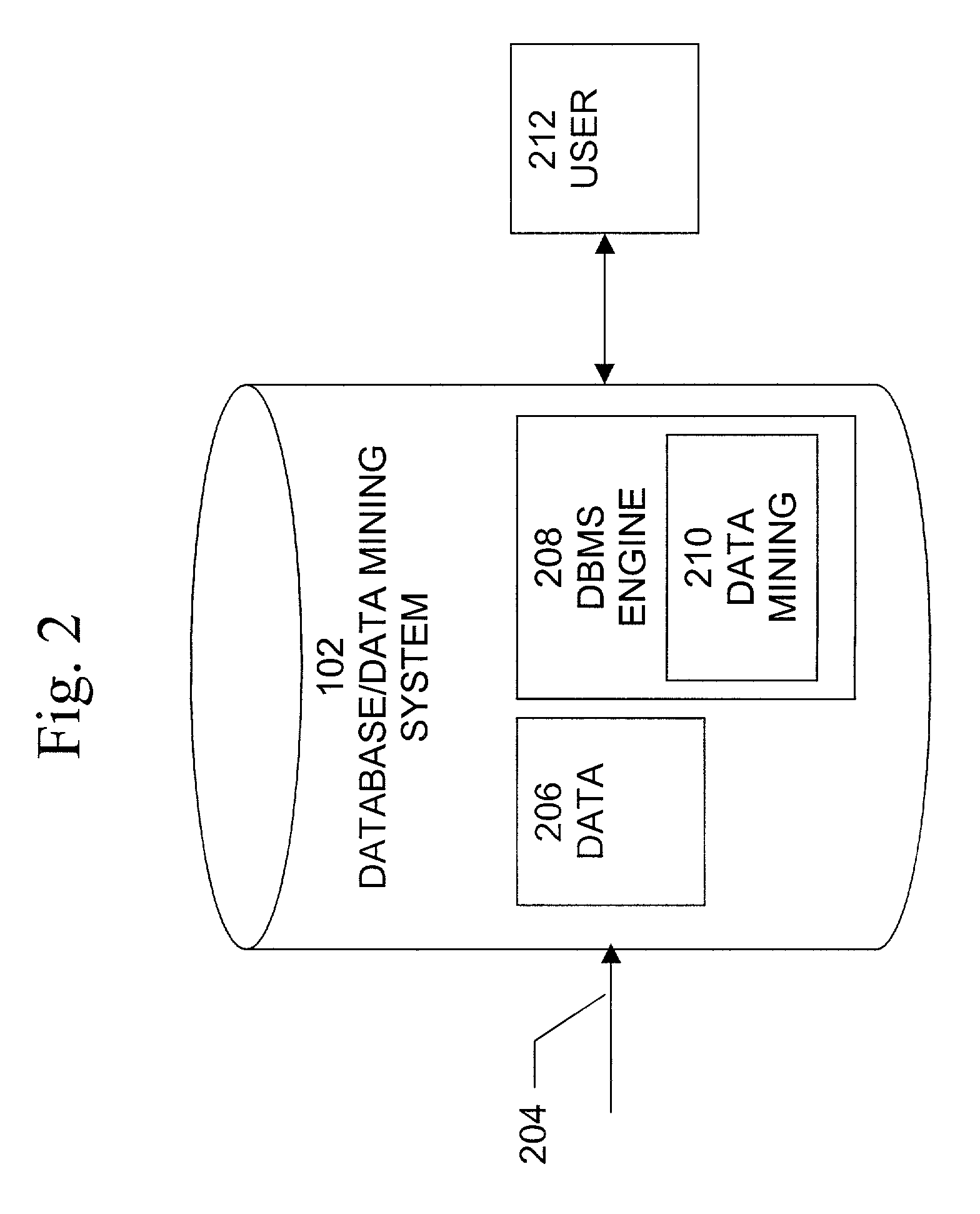Neural network module for data mining
- Summary
- Abstract
- Description
- Claims
- Application Information
AI Technical Summary
Benefits of technology
Problems solved by technology
Method used
Image
Examples
Embodiment Construction
[0020]An exemplary data mining system 100, in which the present invention may be implemented, is shown in FIG. 1. System 100 includes a database / data mining system 102 that is connected to a variety of sources of data. For example, system 102 may be connected to a plurality of internal or proprietary data sources, such as systems 104A–104N. Systems 104A–104N may be any type of data source, warehouse, or repository, including those that are not publicly accessible. Examples of such systems include inventory control systems, accounting systems, scheduling systems, etc. System 102 may also be connected to a plurality of proprietary data sources that are accessible in some way over the Internet 108. Such systems include systems 106A–106N, shown in FIG. 1. Systems 106A–106N may be publicly accessible over the Internet 108, they may be privately accessible using a secure connection technology, or they may be both publicly and privately accessible. System 102 may also be connected to other...
PUM
 Login to View More
Login to View More Abstract
Description
Claims
Application Information
 Login to View More
Login to View More - R&D
- Intellectual Property
- Life Sciences
- Materials
- Tech Scout
- Unparalleled Data Quality
- Higher Quality Content
- 60% Fewer Hallucinations
Browse by: Latest US Patents, China's latest patents, Technical Efficacy Thesaurus, Application Domain, Technology Topic, Popular Technical Reports.
© 2025 PatSnap. All rights reserved.Legal|Privacy policy|Modern Slavery Act Transparency Statement|Sitemap|About US| Contact US: help@patsnap.com



